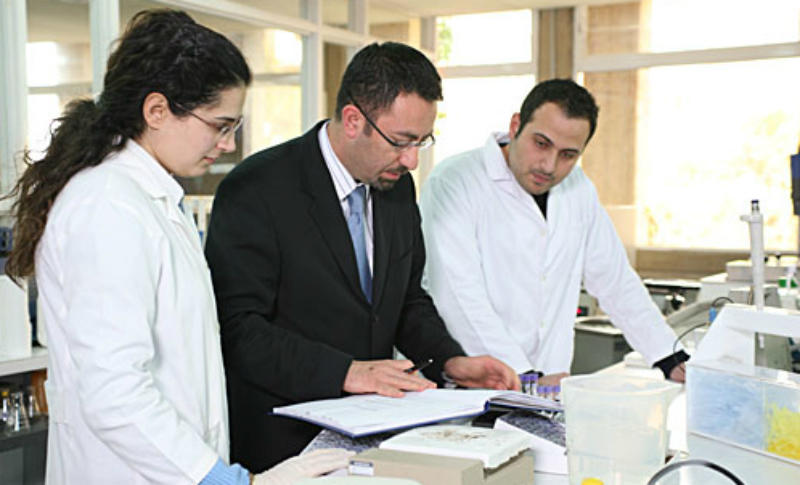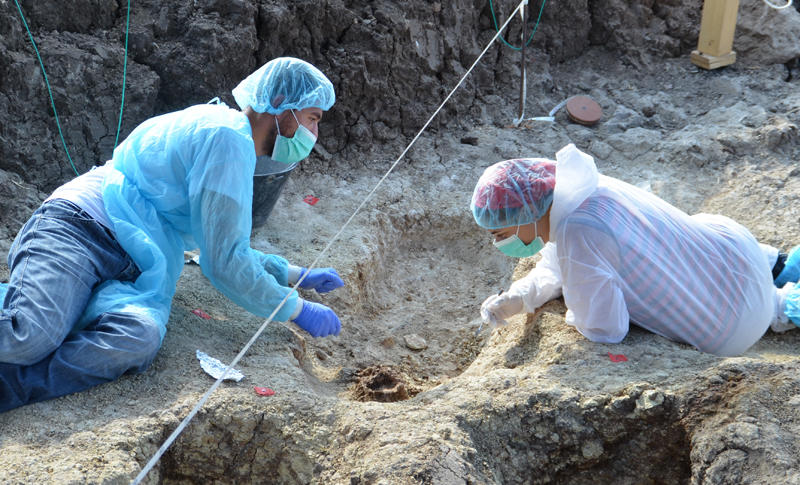The Well-Rounded Phoenicians
A famous LAU geneticist discovers that our ancient ancestors were more diverse than previously thought.
Where do we come from? That question has transfixed people across the world for millennia. For most people in Lebanon, the answer is simple: the Phoenicians.
But who were they, exactly, and where did they come from?
Pierre Zalloua, world-renowned geneticist and faculty member at the Gilbert and Rose-Marie Chagoury School of Medicine, has spent much of his career studying the genetic markers of Lebanon’s ancient ancestors. Indeed, in recent groundbreaking studies, he discovered that one out of every 17 men in the Mediterranean carries Phoenician genes, and that a mixture of lineages from Phoenician settlements across the region are present in modern Lebanese DNA.
Now, in a paper published Wednesday in the scientific journal PLoS ONE, Zalloua and Professor Lisa Matisoo-Smith of the University of Otago focused on mobility in Phoenician societies, which emerged from Levantine coastal city states around 1800 BCE. Over the next 900 years, Phoenicians spread across the Mediterranean, establishing settlements in North Africa, Spain, southern Italy, Malta and Cyprus. They were first and foremost mariners, who responded to the Assyrian Empire’s need for precious metals by sailing westward in search of trade.
The scientists and their team studied Phoenician and Punic DNA from several ancient burial sites in Lebanon and Sardinia. The Punic people were Phoenicians who had their own society based in Carthage, Tunisia. This study is the first time DNA is extracted from bones excavated in Lebanon and Sardinia.
The scientists focused on genes from the mitochondria of the cell, which is passed down only from the mother’s side. Thus, their research could only give them information on the samples’ maternal lineage.
Their results indicate that the women who lived in Phoenician settlements were from diverse ethnic backgrounds, either as indigenous inhabitants of the lands where the Phoenicians set up trade networks or as foreigners from further afar.
“The Phoenicians were inclusive and integrative of the indigenous peoples, and there was much mobility, often over great distances, around the Phoenician networks,” said Zalloua.
Indeed, “We found mitochondrial DNA that was likely from North Africa or the Near East and even a lineage that is from Northwestern Europe, which today is found at high frequency in southern Ireland – a location linked to Phoenician traders in search of tin,” said Matisoo-Smith in a press release.
“These findings tell us a lot about Phoenician society,” said Zalloua. “When you bring women to settlements, it means you have a stable society. They were not conquerors, but traders. The level of female mobility in their society is quite shocking for the time.”
“It also shows us that identity is a cultural phenomenon,” he added. “Most of the samples that we have are culturally Phoenician, as they were buried as Phoenicians, but genetically, they are diverse.”

